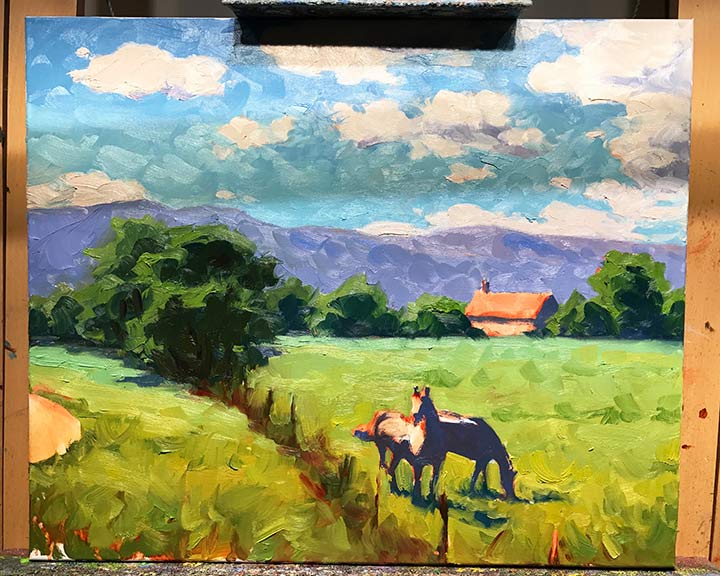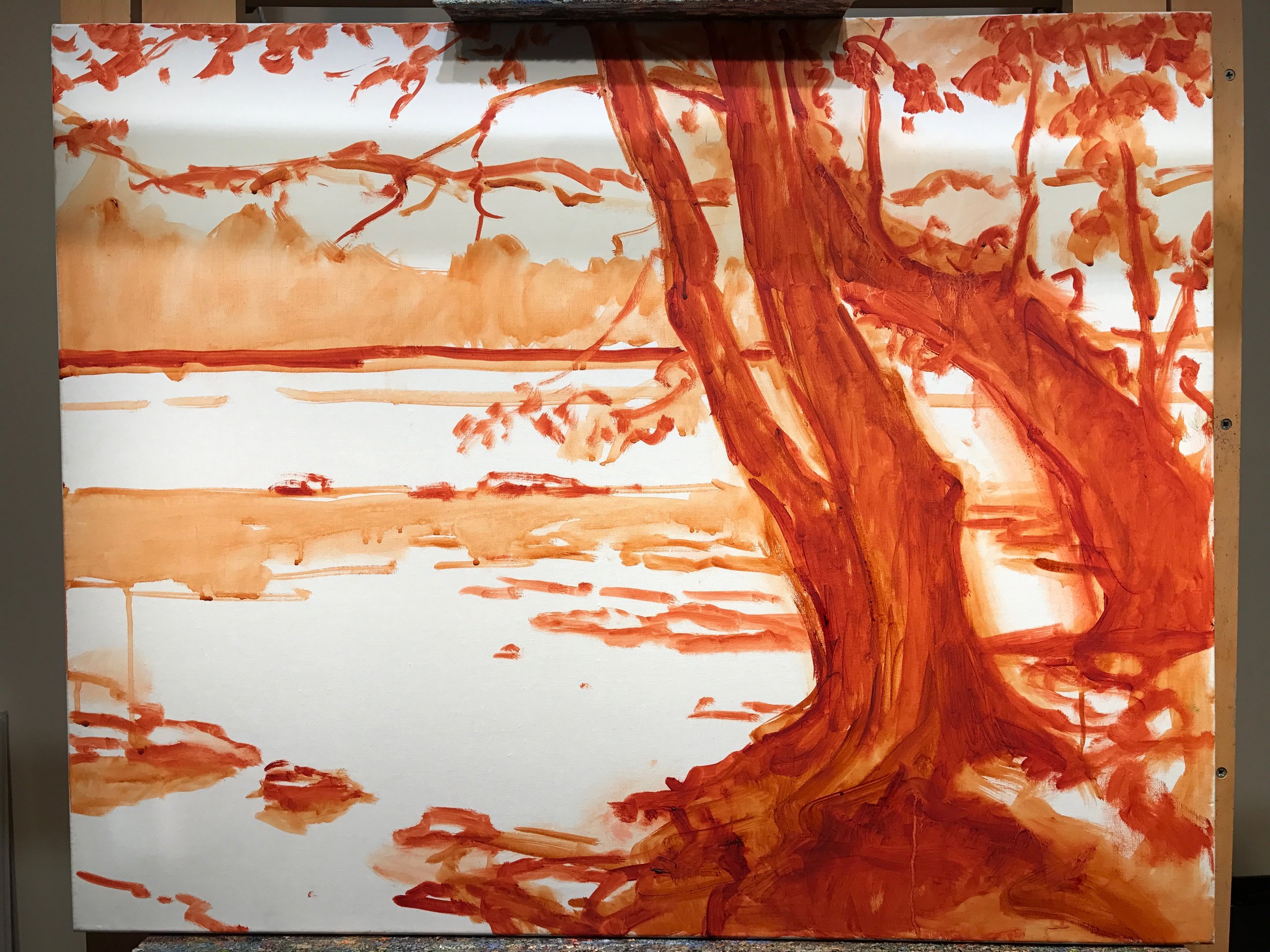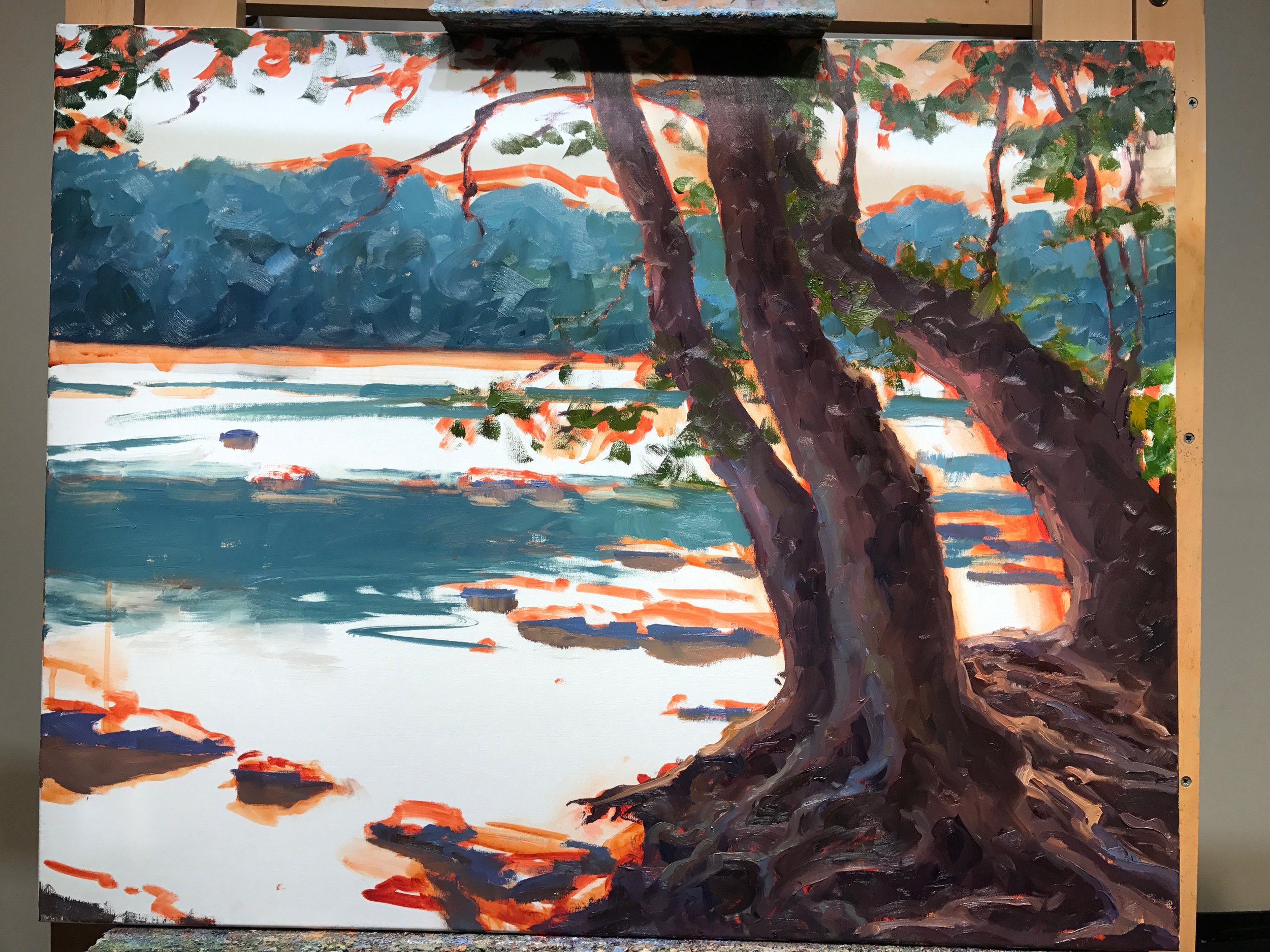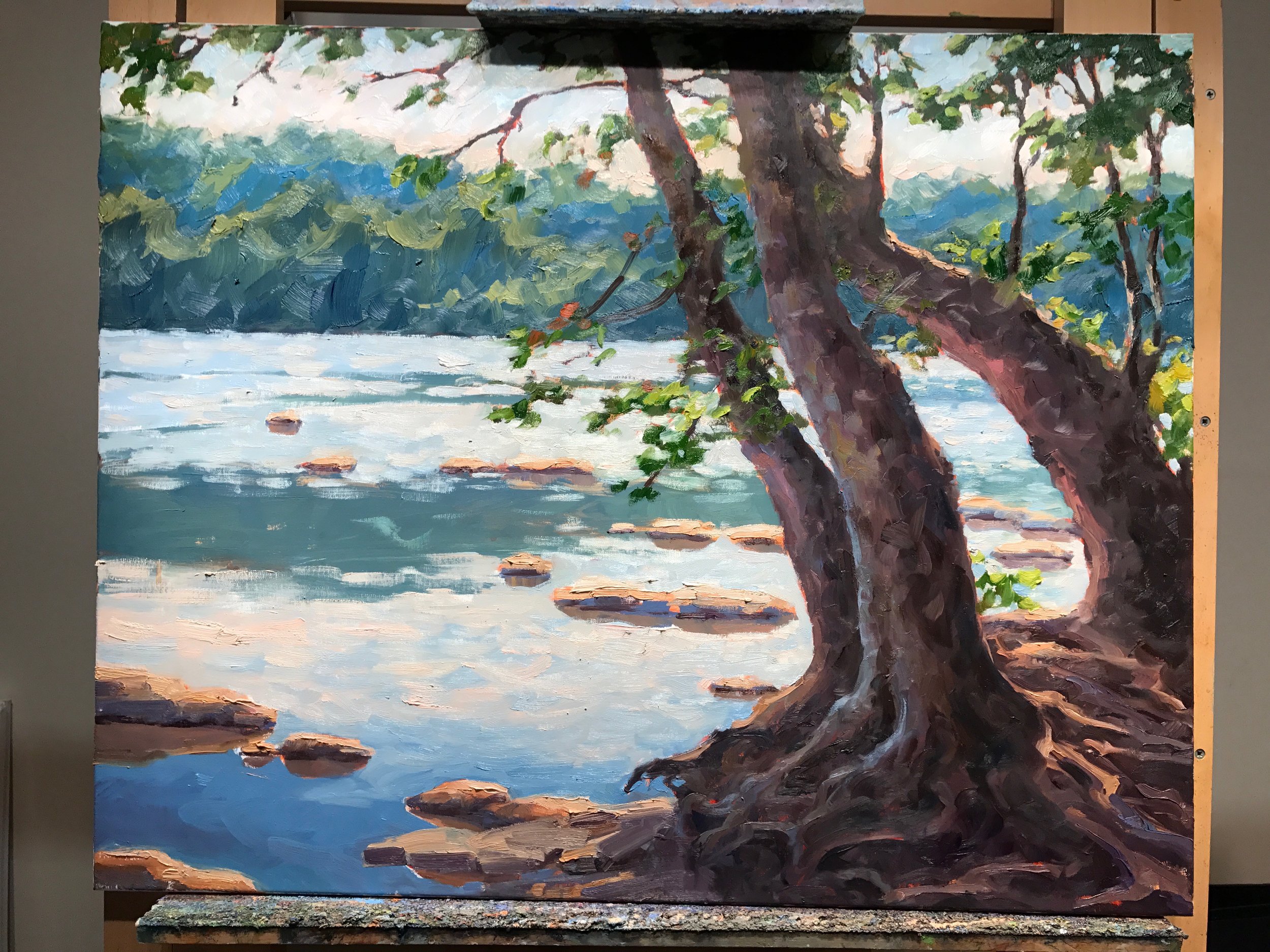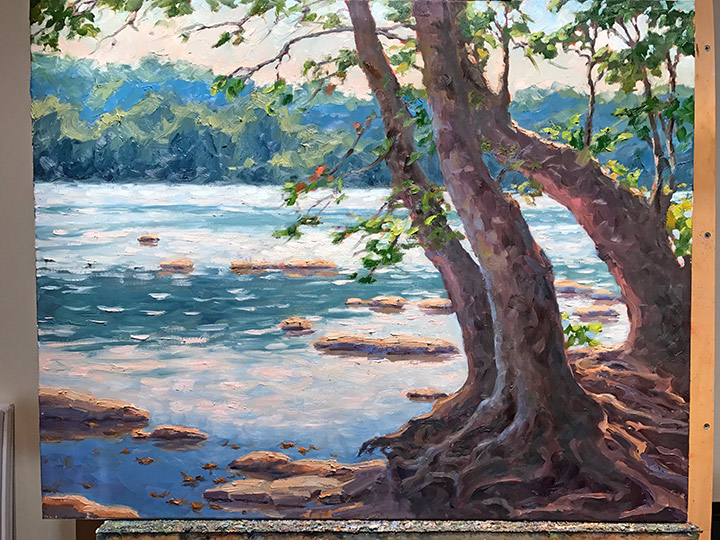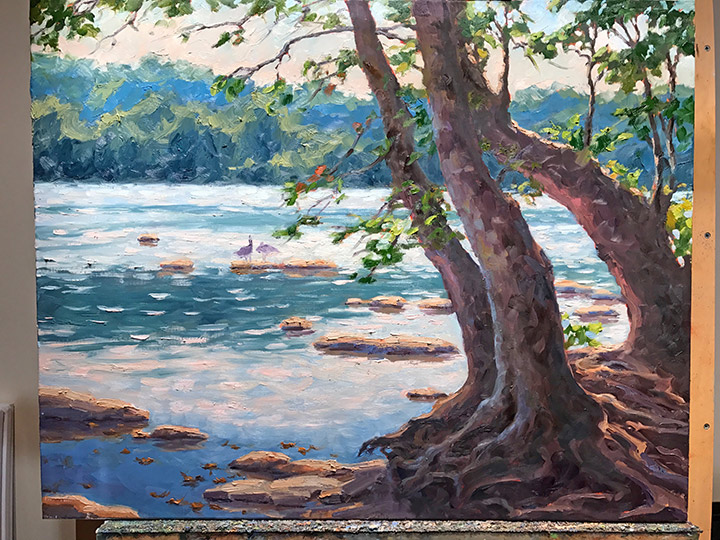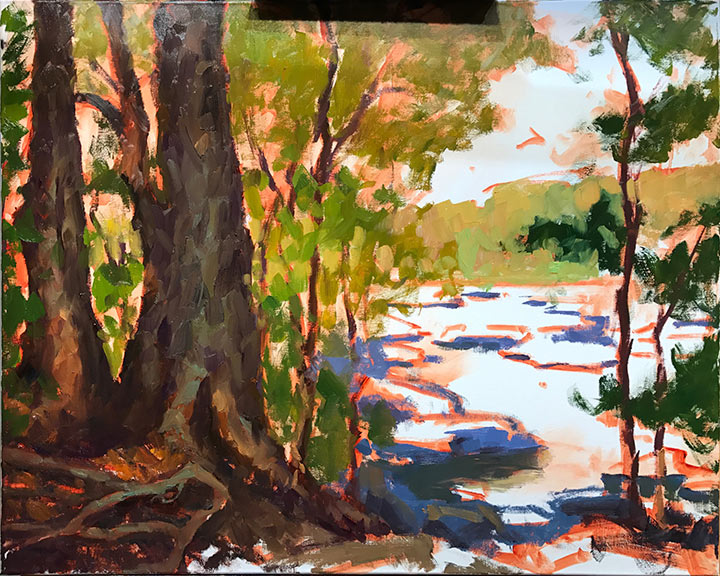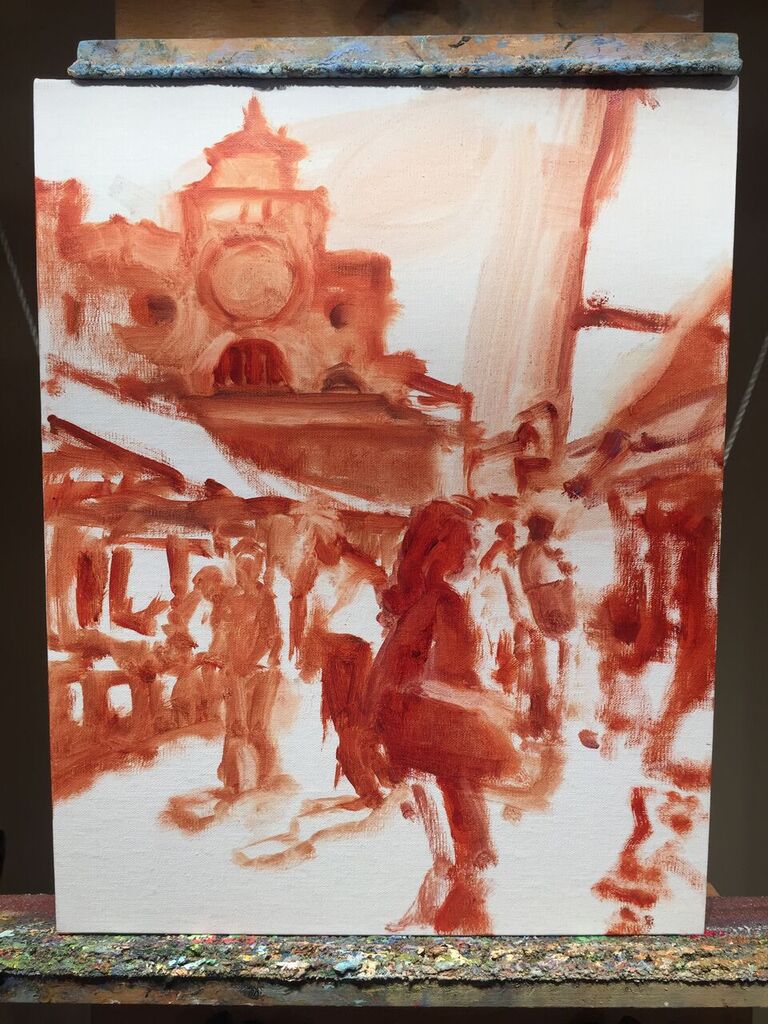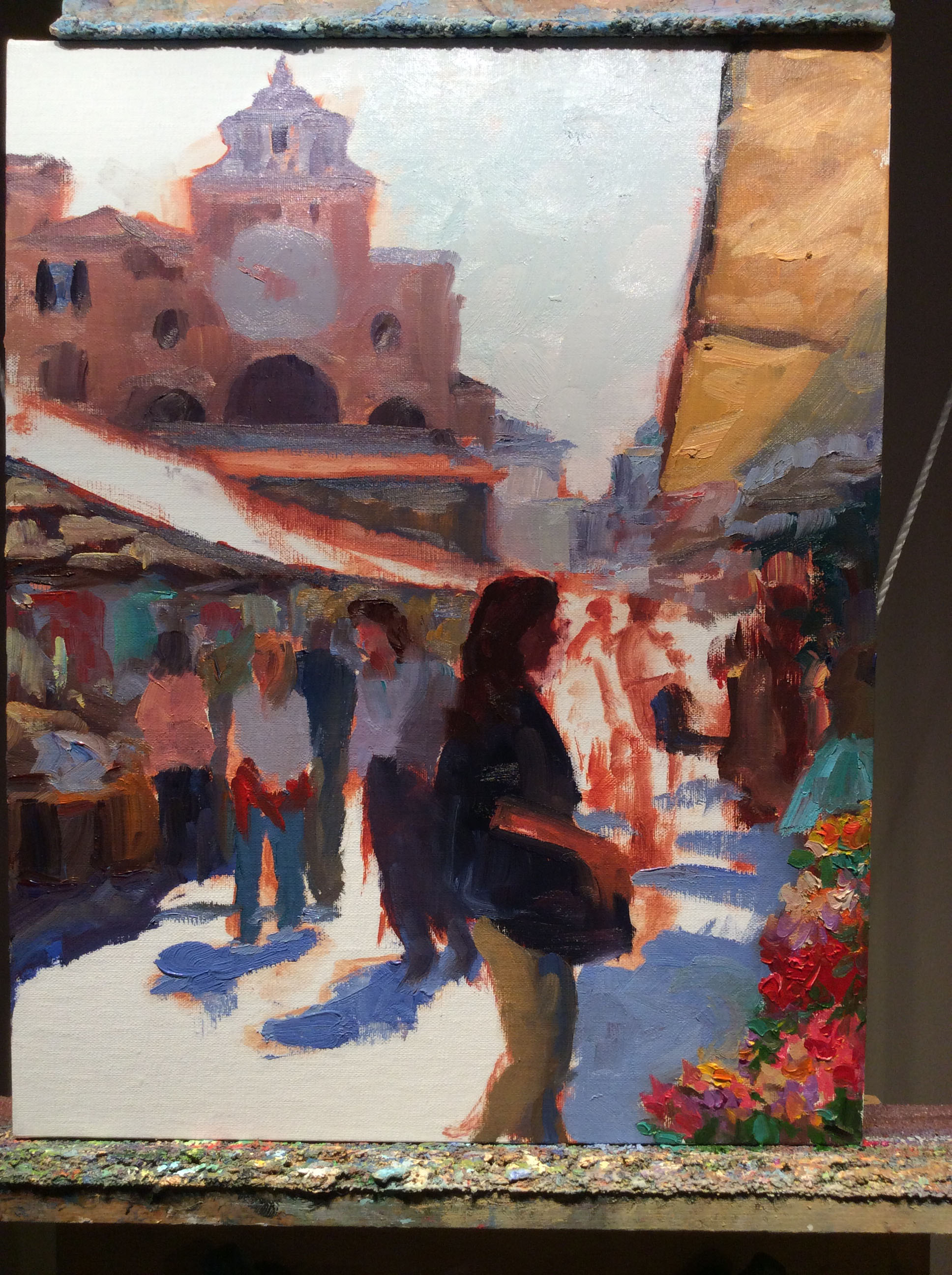Life in the Meadow; Start to Finish
/Today I thought I'd share the progressive steps for my newest painting of the beautiful Blue Ridge Mountains. (My usual disclaimers and apologies about the quality of these in-progress photos apply due to lighting conditions in my temporary work space.) This view is near the little B&B where we have stayed on a couple of occasions while visiting Bedford, Virginia.
I'm starting as usual with a sepia-toned sketch thinned with Gamsol to work out the main elements of my composition. This is very loose and general, but it helps me to determine placement. At this early stage I am not overly obsessed with exactness of the forms. Unlike with watercolor, in oil painting I like to carve and refine shapes as I go along.
In the next steps I concentrate on massing in areas in the shadow family. This doesn't take too long because in contrast to my prior painting of the Blue Ridge which was predominantly in shadow, this new painting is predominantly sunlit, with a light source that is nearly overhead.
Next steps are massing in the meadow and the rest of the tree shapes, as well as the distant mountains
Followed by the sky
With the canvas nearly covered I work out the finer details of my primary focal area (the horses).
At the final stages I add some suggestions of wildflowers to the field. I also add highlights and soften edges here and there, until I achieve the illusion of depth and light I'm after.
Voila! The final:





